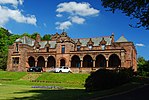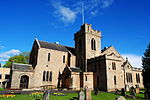West of Scotland F.C.

West of Scotland Football Club is a rugby union club based in Milngavie, Scotland. Founded in 1865, West of Scotland are one of the oldest rugby clubs in the world, and one of the founding members of the Scottish Rugby Union. West have enjoyed a long and successful history, winning numerous Scottish Championships and producing an incredible number of international players, and a strong contingent of British and Irish Lions. During the 1960s and 1970s, West were a true powerhouse of British rugby – regularly fielding up to ten internationals. Indeed, West famously developed a pack featuring Gordon Brown, Peter Brown, Sandy Carmichael (2 Lions and the Scotland Captain), all of whom are considered amongst the best rugby players ever produced by Scotland. In the 'Open Era' of professionalism, West have produced a significant number of players who have progressed to the professional and international levels. The most notable of these luminaries is Gordon Bulloch, who enjoyed sparkling professional career with playing Glasgow and Leeds, captaining Scotland, and playing for the British and Irish Lions, before reportedly rejecting a contract offer from the famous French Champions Stade Toulousain to make a triumphant return to the even-more-famous 'Red and Yellow'. A number of other professional players – such as Rob Harley – have emanated from West before going on to higher honours; and a number of current international players pulled on the red and yellow jersey having played for the club through the SRU's Pro-player draft.
Excerpt from the Wikipedia article West of Scotland F.C. (License: CC BY-SA 3.0, Authors, Images).West of Scotland F.C.
Glasgow Road,
Geographical coordinates (GPS) Address Nearby Places Show on map
Geographical coordinates (GPS)
| Latitude | Longitude |
|---|---|
| N 55.934875 ° | E -4.313536 ° |
Address
1st XV pitch
Glasgow Road
G62 6QG , Burnbrae
Scotland, United Kingdom
Open on Google Maps










